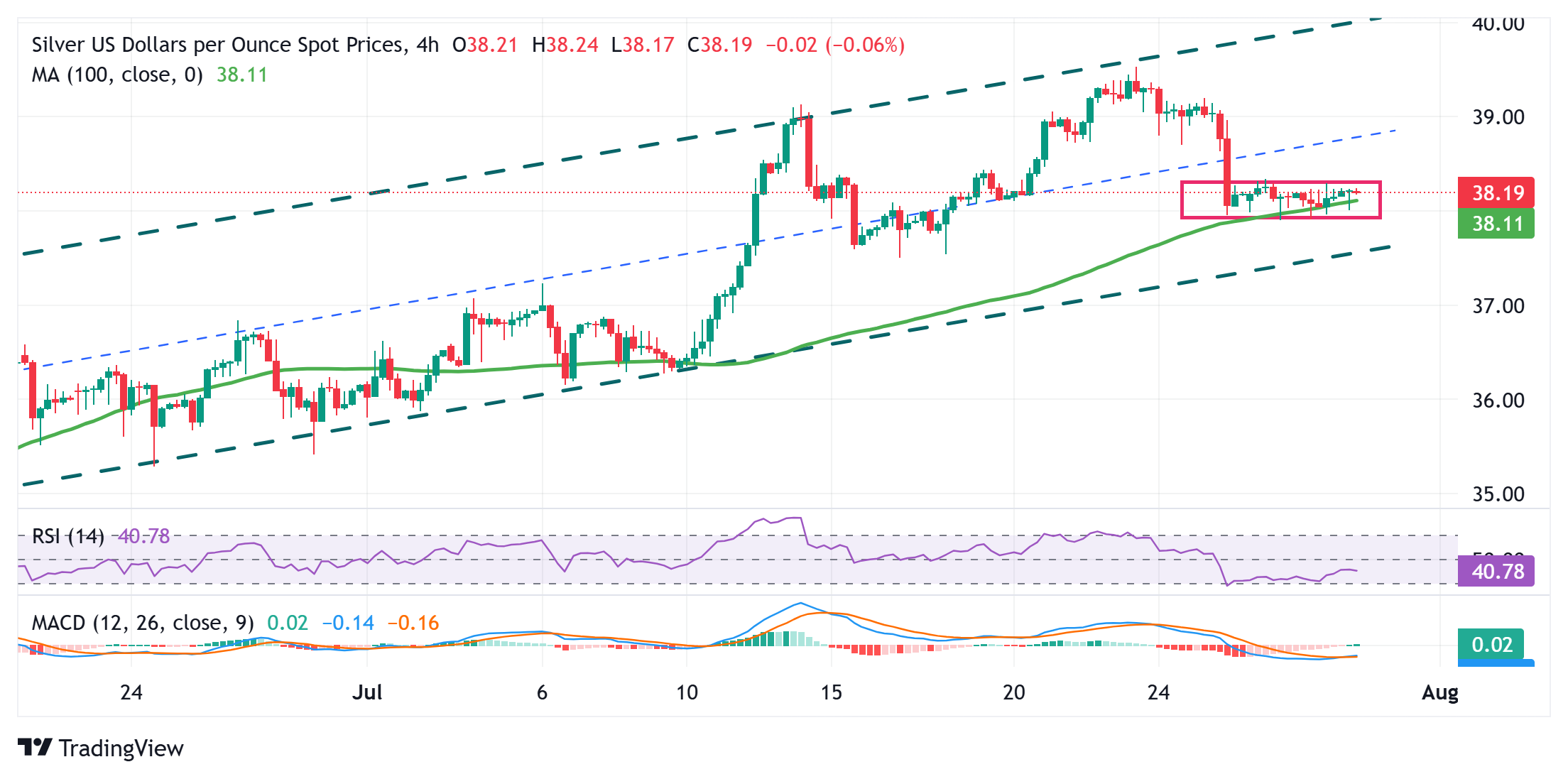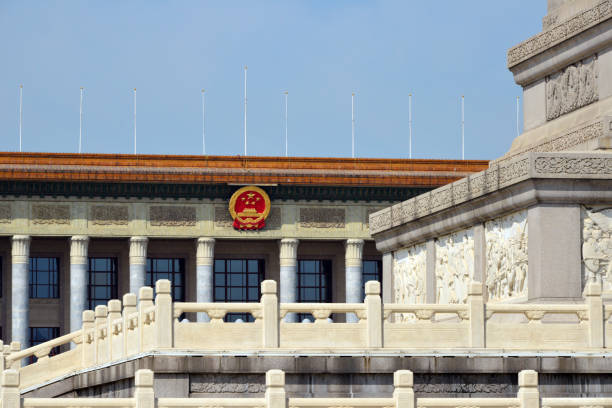Silver Price Forecast: XAG/USD extends range play above $38.00 mark

- Silver edges higher on Tuesday, though it lacks follow-through and remains confined in a band.
- The mixed technical setup warrants caution before positioning for a firm near-term direction.
- A sustained strength beyond the $38.25-$38.30 hurdle would negate near-term negative bias.
Silver (XAG/USD) extends its sideways consolidative price move for the third straight day, though it manages to hold above the $38.00 mark through the Asian session on Wednesday.
From a technical perspective, the range-bound price action constitutes the formation of a rectangle on hourly charts. Against the backdrop of the recent pullback from a multi-year peak, this could be categorized as a bearish consolidation phase. However, positive oscillators on hourly/daily charts warrant some caution before positioning for deeper losses.
Meanwhile, a sustained strength beyond the $38.25-$38.30 region, or the top boundary of the trading range, has the potential to lift the XAG/USD to the next relevant hurdle near the $38.70 area en route to the $39.00 round figure. The momentum could extend further towards the $39.50 area, or the highest since February 2012 touched last month.
On the flip side, acceptance below the $38.00 mark would reaffirm the negative bias and make the XAG/USD vulnerable to accelerate the fall further toward the $37.35-$37.30 region. The latter represents the lower end of a short-term ascending channel and should act as a key pivotal point, which, if broken, should pave the way for deeper losses.
Silver 4-hour chart

Silver FAQs
Silver is a precious metal highly traded among investors. It has been historically used as a store of value and a medium of exchange. Although less popular than Gold, traders may turn to Silver to diversify their investment portfolio, for its intrinsic value or as a potential hedge during high-inflation periods. Investors can buy physical Silver, in coins or in bars, or trade it through vehicles such as Exchange Traded Funds, which track its price on international markets.
Silver prices can move due to a wide range of factors. Geopolitical instability or fears of a deep recession can make Silver price escalate due to its safe-haven status, although to a lesser extent than Gold's. As a yieldless asset, Silver tends to rise with lower interest rates. Its moves also depend on how the US Dollar (USD) behaves as the asset is priced in dollars (XAG/USD). A strong Dollar tends to keep the price of Silver at bay, whereas a weaker Dollar is likely to propel prices up. Other factors such as investment demand, mining supply – Silver is much more abundant than Gold – and recycling rates can also affect prices.
Silver is widely used in industry, particularly in sectors such as electronics or solar energy, as it has one of the highest electric conductivity of all metals – more than Copper and Gold. A surge in demand can increase prices, while a decline tends to lower them. Dynamics in the US, Chinese and Indian economies can also contribute to price swings: for the US and particularly China, their big industrial sectors use Silver in various processes; in India, consumers’ demand for the precious metal for jewellery also plays a key role in setting prices.
Silver prices tend to follow Gold's moves. When Gold prices rise, Silver typically follows suit, as their status as safe-haven assets is similar. The Gold/Silver ratio, which shows the number of ounces of Silver needed to equal the value of one ounce of Gold, may help to determine the relative valuation between both metals. Some investors may consider a high ratio as an indicator that Silver is undervalued, or Gold is overvalued. On the contrary, a low ratio might suggest that Gold is undervalued relative to Silver.






